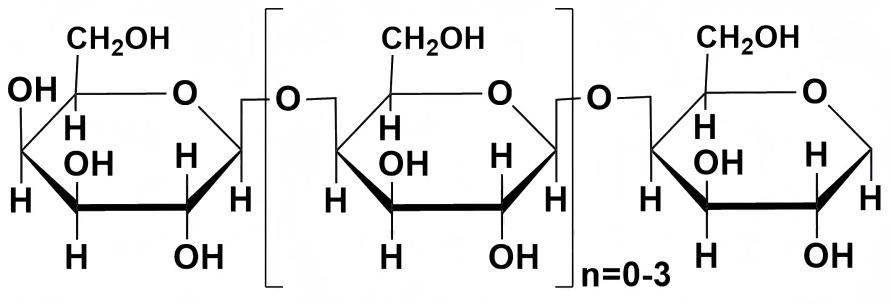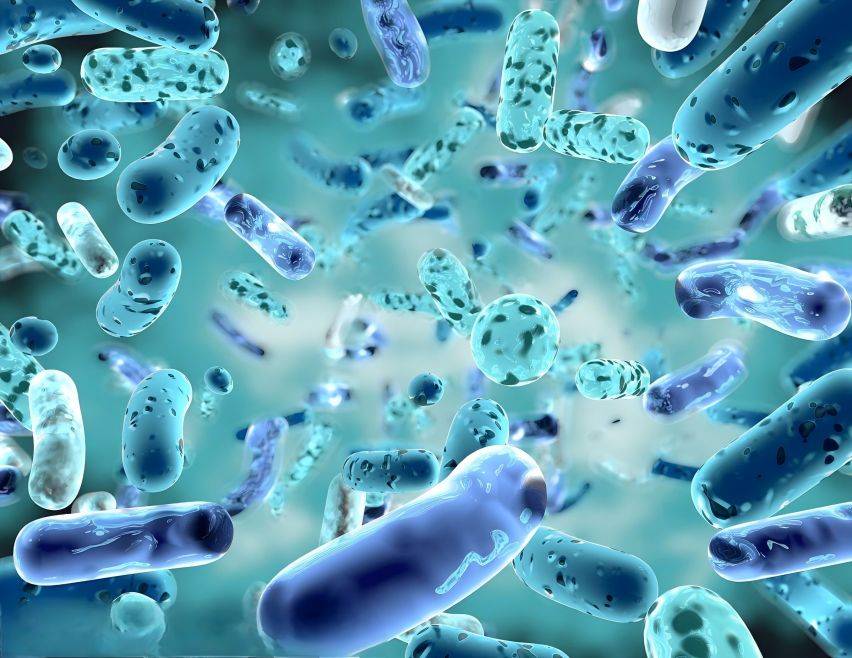What Are the Uses of Galacto Oligosaccharides in the Food Field?
1 Production of oligosaccharides
In 1980, Japanese companies Yakult Honsha, Nissin Sugar and Snow Brand Milk Products obtained 15 patents for oligosaccharide products. In the early 1990s, Europe and the United States began to develop oligosaccharide products and apply them in industrial production. In China, research on the production of oligosaccharides began in the 1990s, and now two companies, Guangdong Jiangmen Quantum Hi-Tech Biological Engineering Co., Ltd. and Guangdong Yunfu Xinjinshan Biotechnology Co., Ltd., are engaged in the commercial production of oligosaccharides [1-4].
At present, the main domestic and foreign companies producing oligosaccharides are: Guangdong Jiangmen Quantum Hi-Tech Biological Engineering Co., Ltd., Guangdong Yunfu Xinjinshan Biotechnology Co., Ltd., Yakult Honsha Co., Ltd. (Japan), Nissin Sugar Manufacturing Co., Ltd. (Japan), and Borculo Domo Ingredients Pty Ltd (Netherlands). The American Kerry Group plc also produces oligosaccharides in powder form.
2 Chemical structure and physical and chemical properties of galacto-oligosaccharides
2. 1 Chemical structure
Galactooligosaccharides (GOS) are produced from lactose by the action of β-galactosidase, which converts lactose into oligosaccharides. The molecular structure of GOS generally consists of 1–7 galactose units linked to galactose or glucose molecules, i.e. Gal-(Gal)n-Glc/Gal( n is 0 6) [5]. The structural formula is shown in Figures 1 and 2 below.
β-Galactosidase is a hydrolase that hydrolyzes lactose at low concentrations, and when the lactose concentration increases, a reaction of glycan transfer occurs to form oligosaccharides [6-7]. Galacto-oligosaccharides are mainly composed of 6'-β-galactosyl residues contained in breast milk, with 26 monosaccharides. The galactose residues are linked by β (1→4) bonds, with β (1→4) bonds being the main type. The bonds between galactose and glucose are mainly β (1→4) bonds [8].
Commercially produced oligosaccharides are usually a mixture of glucose, galactose, lactose, galactose disaccharides, galactose trisaccharides, galactose tetrasaccharides and galactose pentasaccharides. The main factors affecting the structure and ratio of oligosaccharides formed depend on the source of the β-galactosidase used in production and the production process [9-12]. There are some differences in the structural ratios of oligosaccharide galactose products produced by different companies, as shown in Table 1.

Although the β-galactosidase used and the production process vary, the glycosidic bonds in commercially available oligosaccharides are mainly linked via β-D-(1→6) or β-D-(1→4) galactosidic bonds. In the components, β-D-(1→3) galactosidic bonds are also relatively common, while β-D-(1→2) galactosidic bonds are rare. Components without glucose but only linked galactose, i.e. β-D-Gal-(1→6)-D-Gal, have also been found. The glycosidic bond structures of different oligosaccharide degrees that have been measured are listed in Table 2 [5].
As research progresses, more oligosaccharide structures are being discovered. Shuichi et al. discovered five new oligosaccharide structures when studying the synthesis of Bacillus circulans β-galactosidase using lactose as a raw material, and all of them can be preferentially utilized by Bifidobacterium [13].
In 2009, Guangdong Jiangmen Quantum Hi-Tech Biological Engineering Co., Ltd. entrusted the French Lille University of Science and Technology to conduct structural testing on the oligosaccharide raw materials it produced, and discovered two structures of oligosaccharides not found in Table 2, namely β-Gal-(1→4)-β-Gal-(1→4)-Glu and β-Gal-(1→2)-β-Gal-(1→2) (1→2) - β - Gal - (1→4) - Glu.
2. 2 Physical and chemical properties
Commercially available oligosaccharide galactose is translucent, yellowish to colorless; has low viscosity, similar to that of high fructose syrup; is 20% to 40% as sweet as sucrose, less than half as sweet, and has a refreshing taste; is highly water-soluble and has strong moisture retention properties; its water activity is similar to that of sucrose; does not bind minerals; is stable to both acids and heat, and at pH 7, does not decompose after 10 minutes at 160 ℃ for 10 min without decomposing; at pH 2, it remains stable at 100 ℃ for 10 min. Under acidic conditions at pH 2 and a temperature range of 5 37 ℃, the acid stability of galacto-oligosaccharides is higher than that of fructo-oligosaccharides, so they can be used in acidic foods [14-15].
3 Physiological functions of galacto-oligosaccharides
3.1 Low-energy carbohydrates
Compared with lactose and sucrose, oligosaccharides contain β (1→6), β (1→4) and β (1→3) galactoside bonds, and are not hydrolyzed by β-galactosidase in human digestive fluids. The results of the stomach acid test, the small intestinal fluid decomposition test and the 14C-labeled excretion test show that galacto-oligosaccharides are not digested or absorbed by the body's digestive system, and can reach the large intestine directly to be utilized by intestinal bacteria. Some researchers also used the small intestinal mucosal extract of SD male rats to conduct an in vitro hydrolysis test of galacto-oligosaccharides and found that the enzymes in the duodenum, jejunum and ileum could not hydrolyze galacto-oligosaccharides. Therefore, oligosaccharides are low-energy carbohydrates that can be used as sweeteners and fillers in foods for diabetics [16-18].
3.2 Promotes the proliferation of bifidobacteria
Galactose-based oligosaccharides (GOS) components of galactose-transfer oligosaccharides (TOS) can be easily utilized by bifidobacteria in the human intestine. However, harmful bacteria such as Escherichia coli, Proteus mirabilis, Clostridium perfringens, Enterococcus faecalis, Streptococcus mutans, some Streptococcus species and Staphylococcus aureus can hardly utilize TOS. It has a beneficial effect on the human body by stimulating the proliferation of beneficial bacteria in the intestines [19].
Gibson G R defines prebiotics as substances that can only be utilized by beneficial bacteria in the intestine and not by harmful bacteria [20-21]. Animal experiments and human trials have shown that a daily intake of 2–10 g of oligosaccharides can significantly increase the number of bifidobacteria in the stool, reduce the number of bacteroids, and establish an intestinal flora dominated by bifidobacteria [5, 22].

3. 3 Improves the absorption of minerals and prevents osteoporosis
Galacto-oligosaccharides promote calcium absorption and prevent osteoporosis by being fermented by bifidobacteria in the large intestine to produce organic acids [23]. Clinical trials have found that postmenopausal women are at high risk of osteoporosis and coronary heart disease. Chonan et al. [24] compared female Wistar rats that had undergone ovariectomy and were fed with galacto-oligosaccharides with control rats. The experimental group was found to have better calcium absorption, with significantly higher ash weight in bone and calcium content in the embryo bone than the control group. This indicates that oligosaccharide intake can effectively promote calcium absorption in the intestine, which is good for bone mineral deposition, and thus has a good effect on some osteoporosis patients. At the same time, magnesium absorption is also improved by oligosaccharide intake [25-26].
3. 4 Improves lipid metabolism
Human and animal tests have found that oligosaccharides can improve lipid metabolism, reduce the concentration of total serum cholesterol, and increase the proportion of high-density lipoprotein in the serum. When the subjects consumed 6–12 g of oligosaccharides per day for 2 weeks to 3 months, their total cholesterol and triglyceride levels were significantly reduced on average, and their HDL-cholesterol levels increased. After the intake was stopped, the improvement in serum lipids gradually disappeared and returned to the pre-intake state [27–28]. Since the reduction in serum cholesterol levels is thought to be the result of changes in the balance of the intestinal microflora, it can be assumed that galacto-oligosaccharides promote the growth and proliferation of bifidobacteria, which in turn control cholesterol synthesis by affecting the activity of β-hydroxy-β-methylglutaryl-coenzyme A reductase, thereby reducing serum cholesterol levels [29].
3. 5 Prevention and treatment of constipation
When oligosaccharides are ingested, bifidobacteria in the intestine grow and multiply, fermenting and breaking down oligosaccharides into large amounts of short-chain fatty acids (acetic acid, propionic acid, butyric acid, etc.) and producing gas. This lowers the pH in the intestines, inhibits the growth and metabolism of harmful bacteria, stimulates bowel movement, increases the moisture content of the stool and maintains a certain osmotic pressure, thereby preventing constipation [26, 30]. Ulla Teuri et al. conducted a trial on 14 women suffering from constipation, with an average age of 79.6 years. The trial showed that the elderly with poor bowel movements who consumed 9g of oligosaccharides per day and after two weeks, the constipation improved [31].
3. 6 Low caries-inducing
Caries is caused by the erosion of oral microorganisms. Since oligosaccharides are not substrates for oral streptococci, they do not cause caries and can have an anti-caries effect [32].

3. 7 Generate nutrients and improve nutritional status
Galacto-oligosaccharides promote the growth of bifidobacteria in the intestine, which are beneficial for the production of B vitamins. Bifidobacteria can synthesize VB1, VB2, VB6, VB12, niacin and folic acid in the human large intestine, providing nutrients directly to the host [33]. Some bacteria in the intestines of adults have a destructive effect on B vitamins. For example, Thiamin-Lyase bacteria can break down VB1 and cause deficiencies. Galacto-oligosaccharides can promote the proliferation of bifidobacteria, inhibit the growth of this bacterium and provide the body with VB1 [34-35].
Animal experiments have shown that bifidobacteria can also improve the body's digestion and absorption of lactose. Galactose obtained from bifidobacteria fermenting lactose is the main component of gangliosides in the nervous system, and it is closely related to the rapid development and growth of brain tissue in newborns [36]. It can also promote the absorption of protein, increase the body's nitrogen and protein accumulation, and reduce blood ammonia concentration [37].
3. 8 Improves immunity, anti-tumor and anti-aging functions
Animal experiments have confirmed that bifidobacteria proliferate in the intestine, which on the one hand activates superoxide dismutase (SOD) in the blood serum to eliminate oxidized free radicals in the body [38]; on the other hand, it increases the level of antibodies in the body, activates the phagocytic activity of macrophages, and improves the body's ability to fight infection [39-41]. The proliferation of bifidobacteria in the intestine plays an important role in preventing, inhibiting and killing tumor cells and delaying aging of the body [42-43]. Therefore, ingesting oligosaccharides can help improve the body's immunity and enhance its anti-tumor and anti-aging functions.
4 Development and application of oligosaccharides in the food industry
In 1990, oligosaccharides were applied to some food and beverage products in Japan, and commercialized end products appeared. Currently, oligosaccharides are widely used in Japan as sweeteners, sugar substitutes, food ingredients, and functional food ingredients, and are added to various foods such as dairy products, candy, beverages, bread, jam, desserts, and health foods. In recent years, Europe, China, and Japan have successively carried out a large amount of research on the production and functions of oligosaccharides. As a new prebiotic functional factor and an ideal food ingredient, oligosaccharides have become a research hotspot in food science and are widely used as a prebiotic in infant formula, dairy products, baked goods, candy, foods for the elderly, and functional foods.
The Ministry of Health of China has approved GOS as a new resource food. It is also allowed to be added to infant foods, dairy products, beverages, baked goods, and candy (Ministry of Health of the People's Republic of China Announcement No. 20 of 2008, Ministry of Health of the People's Republic of China Announcement No. 12 of 2007) [45].
The following describes the application of galacto-oligosaccharides in dairy products and health foods.
4. 1 Application of galacto-oligosaccharides in dairy products
Consumers in countries and regions such as Japan, Europe and the United States have a high level of awareness of functional oligosaccharides. The development and application of new types of functional oligosaccharides such as prebiotics is developing rapidly in these regions, and they are mainly used in formula foods and health products. In China, galacto-oligosaccharides (GOS) are mainly used in formula milk powder, milk beverages and fermented milk. For formula milk powder, especially high-end infant formula milk powder and milk powder for the elderly, galacto-oligosaccharides are a good prebiotic ingredient [46].
One of the most common problems with artificially fed infants is dry stools or even constipation. Studies have shown that formula milk powder containing functional oligosaccharides can better prevent this problem [47-48]. Prebiotics improve digestion, promote nutrient absorption, and produce B vitamins, among other effects. They make dairy products more nutritionally balanced and easier to absorb. The purpose of adding galacto-oligosaccharides is not only to mimic the nutritional composition of breast milk, but also to promote health. The specific amount of addition is determined according to relevant research results, technical regulations and the unit efficacy of galacto-oligosaccharides. Generally, the addition amount is 0.5%–6.0% [5, 26, 45, 49].
According to AC Nielsen statistics, fermented dairy products are one of the six fastest-growing food products in the world (annual growth rate 18%). In the domestic market, fermented dairy products are also one of the fastest-moving new products in the dairy industry. With increasing health awareness, the functionalization of yogurt and the segmentation of consumer groups will become a development trend. Yogurt and flavored milk drinks with added prebiotic factors such as galacto-oligosaccharides are already on the market, such as Mengniu's Health Acid Milk. Suitable for people with constipation, long-term consumption can help digestion and eliminate toxins from the body, slowly regulate the intestines, and relieve and treat constipation [50-53].
4.2 Application of oligosaccharides in health foods
Because of its pure and refreshing sweetness, excellent physiological activity and health-promoting properties, as well as its good moisture retention and ease of processing, galacto-oligosaccharides are widely used in health foods. Maria Saarela [54], Costas G. Biliaderis [55], Pan Daodong [56], Zhong Yaoguang [57] and others have all used galacto-oligosaccharides as functional food ingredients in their own works, believing that they have good prebiotic properties and health-promoting and can be used in a variety of health foods. Currently, there are already products on the market with oligosaccharides as an active ingredient that can promote the proliferation of bifidobacteria, prevent diarrhea, and prevent constipation.
5 Conclusion
In short, as people's living standards continue to improve, the incidence of various diet-related “civilized diseases” is also increasing. Health has become the number one pursuit of humanity in the 21st century. In addition, as people age, their lifestyles become more stressful, work pressures increase, and their diets become less balanced, and for various other reasons such as taking antibiotics and environmental changes, the beneficial bacteria in the body gradually decrease, while harmful bacteria multiply, leading to digestive disorders such as bloating, abdominal pain, belching, and loss of appetite. The impact of diet on human health is being increasingly recognized, and so is the research and development of functional foods containing oligosaccharides. At the same time, consuming foods containing oligosaccharides can alleviate digestive symptoms and reduce the incidence of “civilized diseases”.
Reference:
[1] You Xin. Function and development prospects of oligosaccharides [J]. Food and Drugs, 2007 (11A): 1-4.
[2] Guan Xiaoran, Zhang Dechun. Research status of functional oligosaccharide production process [J]. Chinese Journal of Microecology, 2009 (8): 762-764.
[3] YANG S T ,BEDNARCIK J A. Production of galactooligosaccha- rides from lactose immobilized β - galactosidase [J]. ACS Symp Ser (Applied Biocatalysis in Specialty Chemicals and Pharmaceu- ticals) ,2001 ,776 : 131 -154 .
[4] KANEYOSHI K. Oligosaccharides as nutrition or health food ad- ditive [P]. Japanese Patent : 1175772 ,1999-03 .
[5] Mao Genian, Xu Mudan. Functional Food Physiological Characteristics and Testing Technology [M]. Beijing: Chemical Industry Press, 2005.
[6] KUMIKO A ,MITSUNORI T ,KOKI H ,et al. Production of galactooligosaccharides from lactose using a β - glucosidase from Thermus sp2 - 1 [J]. Biosci Biotech Biochem ,2001 ,65 (2) : 438-441 .
[7] PRENOSIL J E ,STUKER E ,BOURNE J K. Formatiom of oli- gosaccharides during enzymatic lactose hydrolysis and their impor- tance in a whey hydrolysis process ,part II : experimental [J]. Biotech Bioeng,1987 ,30 (9) : 1026 -1031 .
[8] Gui Liqiong, Wei Dongshi. Bioactive substance—galacto-oligosaccharides [J]. China Dairy Industry, 1998 (4): 9-12.
[9] MIGUEL H ,LEIV A L ,GUZMAN ,et al. Formation of oligo- saccharides during enzymatic hydrolysis of milk whey permeates [J]. Process Biochem ,1995 ,30 (8) : 757-762 .
[10] Crittenden R G ,Playne M J. Production ,properties and appli- cations of food -grade oligosaccharides [J]. Trends in Food Science Technology ,1996 ,7 : 353-361 .
[11] SHIN H J ,YANG J W. Galactooligosaccharide production by β- galactosidase in hydrophobic organic media [J]. Biotech Lett ,1994 ,16 ( 11) : 1157 -1162 .
[12] Ekhart PF ,Timmermans E. Techniques for the production of transgalactosylated oligosaccharides [J]. Bulletin of the Inter-national Dairy Federation ,1996 ,313 : 59-64 .
[13] Yanahira S ,Kobayashi T ,Suguri T ,et al. Formation of oligo- saccharides from lactose by Bacillus circulans beta -galactosi- dase [J]. Bioscience biotechnology and biochemistry ,1995, 59 (6) : 1021 -1026 .
[14] Wang Liangdong, Chen Jianwen, Wu Jialin. Functional oligosaccharides prepared from lactose [J]. Beverage Industry, 2008 (5): 1-3.
[15] Zheng Jianxian, Li Xuan. Lactose deep processing products with broad development prospects — galacto-oligosaccharides [J]. Processing Technology, 1998: 26-28.
[16] Huang Shengji, Wan Shoupeng. Characteristics and physiological functions of functional polysaccharides [J]. Food Research and Development, 1999, 20 (4): 47-51.
[17] Raymond R M. Galactosyl -oligosaccharide formation during lactose hydrolysis a review [J]. Food chemistry , 1998 ,63 (2) : 147 -154 .
[18] Miguel H ,L pez L ,Mnica G. Formation of oligosaccharides during enzymic hydrolysis of milk whey permeates [J]. Process Biochemistry ,1995 ,30 (8) : 757-762 .
[19] Qin Yan, Ning Zhengxiang, Wu Guojie. Production and application of oligosaccharides during lactose hydrolysis [J]. Food and Fermentation Industry, 2000, 26 (5): 67-72.
[20] Gibson G R ,Roberfroid M B. Dietary modulation of the human colonic microbiota : introducing the concept of prebiotics [J]. Journal of Nutrition ,1995 ,125 : 1401 -1412 .
[21]Gibson G R. Dietary modulation of the human gut microflora u- sing the prebioticsoligofructose and inulin [J]. J Nutr ,1999, 129 (7) : 1438S-41S.
[22]Zheng Jianxian, Geng Liping. Analysis of functional oligosaccharides [J]. Food and Fermentation Industry, 1997 (1): 39-46.
[23] OSAMU C ,RIE T. Effect of β1-4 linked galactooligosacchar- ides stimulate calcium and magnesium absorption from the large intestine [J]. Yakuruto Kenkyusho Kenkyu Hokokushu, 1999 ,19 : 53-59 .
[24] Chonan O ,Matsumoto K ,Watanuki M. Effect of galactooligo- saccharides on calcium absorption and preventing bone loss in ovariectomized rats [J]. Bioscience Biotechnology and Bio- chemistry ,1995 ,59 : 236-239 .
[25] Griffin I J ,Davila PM ,Abrams S A. Non-digestible oligosac- charides and calcium absorption in girls with adequate calcium intakes [J]. British Journal of Nutrition ,2002 ,87 ( 2 ) : S187 -191 .
[26] G R Gibson ,R A Rastall. Prebiotics : Development and Appli- cation [M].
[27] Gui Liqiong, Wei Dongshi. Bioactive substance—galactooligosaccharide [J]. Natural Product Research and Development, 1999 (3): 41–46.
[28] J Lj Rai ,I F Vujii ,M krinjar ,et al. Assimilation of cholesterol by some cultures of lactic acid bacteria and bifidobac- teria [J]. Biotechnology ,1992 ,14 ( 1) : 39-44 .
[29] Tian Hongtao, Zhang Bolin, Jia Yingmin, et al. Bifidobacterium and human gastrointestinal microecology [J]. Journal of Hebei Agricultural University, 2000, 23 (4): 83-88.
[30] Cummings J H ,Macfarlane G T. Gastrointestinal effects of pre-biotics [J]. Br. J. Nutr.,2002 (5) : 145 -151 .
[31] ULLA T ,RIITTN K. Galactooligosaccharides relieve constipa- tion in elderly people [J]. Ann. Nutr. Metab.,1998 ,42 (6) : 319-327 .
[32] Zhang Guisheng, Zheng Suqin, Li Yan. Physiological effects and development of functional oligosaccharides [J]. Chinese Food and Nutrition, 2004 (4): 22-24.
[33] Hubert Roginski, John W Fuquay, Patrick F Fox. Encyclopedia of dairy science (Volume 2) [M]. Translated by Huo Guicheng. Beijing: Science Press, 2009: 1476-1483.
[34] Zhang Baoyuan, Liu Jun, Ma Xiaohong. Application of bifidobacteria in pediatrics and health care [J]. Beijing Medical Journal, 2001 (1): 63-64.
[35] Tomomatsu H. Health effects of oligosaccharides [J]. Food Technology ,1994 ,10 : 61-65 .
[36] Jin Jingshun. The special physiological health care function of bifidobacteria [J]. Shanghai Medicine, 2005, 28 (3): 245-248.
[37] Lao Wenyan, Qiu Hong. The application of the microecological regulation of bifidobacteria [J]. Chinese Journal of Microecology, 2002, 14 (5): 66-67.
[38] Wang Shirong, Wu Bingxin, Li Hua, et al. Bifidobacterium preparation eliminates oxygen radicals [J]. Chinese Journal of Microecology, 1995, 7 (2): 24-26.
[39] S Yamazaki ,K Machii ,S Tsuyuki ,et al. Immunological re- sponses to monoassociated Bifidobacterium longum and their rela- tion to prevention of bacterial invasion [J]. Immunology, 1985 ,56 ( 1) : 43 – 50 .
[40] Duan Weili, Wang Daqing, Qian Zhenchao, et al. Preliminary study on the anticancer effect of Bifidobacterium and its mechanism [J]. Chinese Journal of Microecology, 1994(2): 11-14.
[42] Zheng Renshu, Wang Bo, Zhang Zhao, et al. Effect of the microecological product Bifidobacterium adolescentis on the acid phosphatase content of macrophages in the abdominal cavity of mice [J]. Chinese Journal of Microecology, 1994 (2): 12-15.
[42] Fujimori M ,Amano J ,Taniguchi S. The genus Bifidobacteri- um for cancer gene therapy [J]. Curr Opin Drug Discov Devel, 2002 ,5 (2) : 200-203 .
[43] Leahy S C ,Higgins D G ,Fitzgerald G F ,et al. Getting better with bifidobacteria [J]. J. Appl. Microbiol , 2005 , 98 (6) : 1303 -1315 .
[44] Wu Hao, Yang Sixing, Zhang Yanjie. Development status and application of functional oligosaccharides in food [J]. China Dairy Industry, 2001 (3): 41-45.
[45] Announcement of the Ministry of Health of the People's Republic of China (No. 12 of 2007) [J]. Chinese Journal of Food Hygiene, 2007, 19 (6): 571-573.
[46] Pang Mingli, Ju Zhengyan, Yang Haijun. Progress in the application of functional oligosaccharides in the dairy industry [J]. China Dairy Industry, 2010 (12): 48-50.
[47] Moro G ,Minoli I ,Mosca M ,et al. Dosage -Related Bifidogenic Effects of Galacto -and Fructooligosaccharides in Formula - Fed Term Infants [J]. J Pediatr Gastroenterol Nutr ,2002, 34 (3) : 291-295 .
[48] G Boehm,M Lidestri ,P Casetta,et al.Supplementation of a bovine milk formula with an oligosaccharide mixture increases counts of faecal bifidobacteria in preterm infants [J].Arch Dis Child Fetal Neonatal Ed ,2002 ,86 (3) : 178 -181 .
[49] M. A Losadaa ,T Olleros. Towards a healthier diet for the co- lon : the influence of fructooligosaccharides and lactobacilli on intestinal health [J]. Nutrition Res.,2002 ,22 ( 1 ) : 71 - 84 .
[50] Wang Xinghua, Yao Sulin, Li Xiufen, et al. Research on the growth characteristics and fermented milk of Bifidobacterium [J]. Journal of Shanxi University (Natural Science Edition), 2000, 23 (2): 153-155.
[51] Pescuma M ,Hébert E M ,Mozzi F ,et al. Functional fermen- ted whey-based beverage using lactic acid bacteria [J]. Int J Food Microbiol ,2010 ,141 ( 1-2) : 73-81 .
[52] Yang YZ, Li F, Pang ML, et al. Current status and prospects of the application of healthy intestinal ingredients in dairy products [J]. China Dairy Industry, 2009 (11): 50-52.
[53] Kaneko T ,Kohmoto T. Effects of Isomaltooligosaccharides In- take on Defecation and Intestinal Environment in Healthy Volun- teers [J]. Journal of home economics of Japan , 1993 ,44 (4) : 245-254 .
[54] Maria Saarela. Functional Dairy Products (Volume 2) [M]. Translated by Zhang Guonong et al. Beijing: China Light Industry Press, 2009.
[50] Costas G Biliaderis, Marta S Izydorczyk. Functional food carbohydrates [M]. Translated by Wang Yuanfeng et al. Beijing: China Light Industry Press, 2009.
[56] Pan Daodong, ed. Functional Food Additives [M]. Beijing: China Light Industry Press, 2006.
[57] Zhong Yaoguang, ed. Functional Foods [M]. Beijing: Chemical Industry Press, 2004.
-
Prev
What Are the Production Methods of Galacto Oligosaccharide (GOS)?
-
Next
What Are the Uses of Galacto Oligosaccharides Powder in Animal Feeding?


 English
English French
French Spanish
Spanish Russian
Russian Korean
Korean Japanese
Japanese




